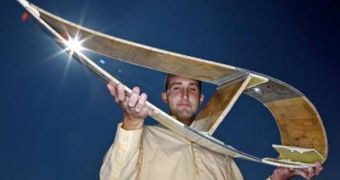Shifting wind and varying intensities in the way air hits the blades are just two of the main reasons why wind farms lose a great deal of efficiency and produce current at fluctuating levels. But a new development in turbine blade technology could lead to an increased efficiency, and could finally make the wind a resource able to compete with established fossil fuels. Researchers at the Purdue University and the Sandia National Laboratories have created a new method of supervising the blades, which employs sensors and computational software to establish the best orientation for the generators.
The upgrades could help turbines become less likely to lose precious time and energy-producing potential while spinning for nothing when the wind shifts. The sensors will be able to pick up minute variations in wind intensity, and to accordingly adjust the entire structure. It could also provide the controlling software with all the information it needs to move the blades in a manner that will ensure an almost uninterrupted energy production. The system will also be able to prevent the blades from getting damaged by high winds, by alerting them of incoming bursts of air at high speeds.
“Wind energy is playing an increasing role in providing electrical power. The United States is now the largest harvester of wind energy in the world. The question is, what can be done to wind turbines to make them more efficient, more cost effective and more reliable?” PU Center for Systems Integrity Director and Purdue Professor of Mechanical Engineering Douglas Adams, who has also been a co-leader of the new research, says.
“The ultimate goal is to feed information from sensors into an active control system that precisely adjusts components to optimize efficiency,” the other co-leader of the study, PU doctoral student Jonathan White, adds. “Industry is most interested in identifying loads, or forces, exerted on turbine blades and predicting fatigue, and this work is a step toward accomplishing that,” he explains.
“The aim is to operate the generator and the turbine in the most efficient way, but this is difficult because wind speeds fluctuate. You want to be able to control the generator or the pitch of the blades to optimize energy capture by reducing forces on the components in the wind turbine during excessively high winds and increase the loads during low winds. In addition to improving efficiency, this should help improve reliability. The wind turbine towers can be 200 feet tall or more, so it is very expensive to service and repair damaged components,” Adams argues.

 14 DAY TRIAL //
14 DAY TRIAL //